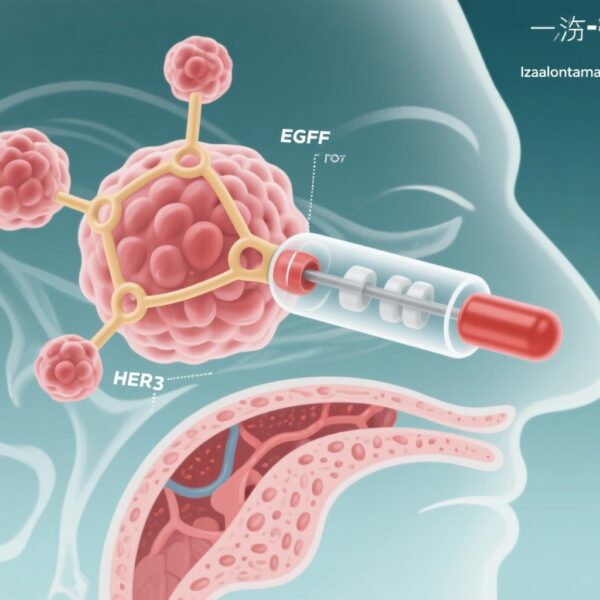Highlight
– Once-weekly semaglutide 2.4 mg reduced major adverse cardiovascular events (MACE) among people with overweight or obesity and established cardiovascular disease but no diabetes in the SELECT trial.
– The cardioprotective effect was consistent across baseline weight and waist circumference categories and was not fully explained by weight loss.
– Reduction in waist circumference accounted for approximately one-third of the observed MACE reduction; the majority of the benefit appears mediated by mechanisms beyond adiposity change.
Background
Cardiovascular disease (CVD) remains the leading cause of morbidity and mortality worldwide, and excess adiposity is a major, modifiable risk factor. Central adiposity—commonly estimated by waist circumference—associates more strongly with cardiometabolic risk than body mass index (BMI) in many epidemiological studies because it better reflects visceral fat and related metabolic dysfunction. Glucagon-like peptide-1 receptor agonists (GLP-1 RAs) have demonstrated both weight-lowering and cardiovascular benefits in people with type 2 diabetes and, more recently, have been developed and approved for chronic weight management in people without diabetes. SELECT was designed to address a crucial clinical question: in people with overweight or obesity and established CVD but without diabetes, are cardiovascular benefits of semaglutide mediated primarily by weight or central adiposity loss, or by other drug-specific mechanisms?
Study design
SELECT was a randomized, double-blind, placebo-controlled, international trial (ClinicalTrials.gov NCT03574597) that enrolled adults aged ≥45 years with a BMI ≥27 kg/m2, established atherosclerotic cardiovascular disease, and without type 2 diabetes. A total of 17,604 participants were randomized 1:1 to once-weekly subcutaneous semaglutide 2.4 mg or matching placebo. The primary endpoint was time to first major adverse cardiovascular event (MACE), defined as cardiovascular death, non-fatal myocardial infarction, or non-fatal stroke. Adiposity measures collected included bodyweight and waist circumference, measured serially during follow-up. The prespecified analysis reported here examined (1) associations of baseline adiposity with MACE risk, (2) relationships of early (week 20) and sustained (up to week 104) adiposity changes with subsequent MACE, and (3) the extent to which changes in adiposity mediated the treatment effect on MACE.
Key findings
Overall effect on MACE: Semaglutide significantly reduced MACE incidence versus placebo across the trial population. Crucially, the magnitude of benefit was broadly consistent across baseline categories of bodyweight and waist circumference, indicating that baseline adiposity did not modify the treatment effect.
Baseline adiposity and MACE
In analyses stratified by randomized group, lower baseline bodyweight and waist circumference were associated with lower MACE incidence among participants randomized to semaglutide. Specifically, semaglutide-group analyses showed an average 4% reduction in MACE risk per 5-kg lower baseline bodyweight (hazard ratio [HR] 0.96; 95% CI 0.94–0.99; p=0.001) and per 5-cm smaller waist circumference (HR 0.96; 95% CI 0.93–0.99; p=0.004). In the placebo arm, a similar association was observed for baseline waist circumference (HR 0.96 per 5 cm; 95% CI 0.94–0.99; p=0.007), but not for baseline bodyweight (HR 0.99 per 5 kg; 95% CI 0.97–1.01; p=0.28).
Adiposity changes and subsequent MACE
The investigators evaluated associations between early (week 20) and sustained (week 104) changes in adiposity and subsequent MACE risk. In participants randomized to semaglutide, there was no linear relationship between the magnitude of early weight loss at week 20 and subsequent MACE risk. In contrast, a greater reduction in waist circumference at week 20 was associated with a lower subsequent risk of MACE. Furthermore, waist circumference reduction sustained up to week 104 was associated with a lower in-trial MACE risk.
Mediation analysis
Using time-varying adjustment for changes in waist circumference, investigators estimated that approximately 33% of the semaglutide treatment effect on MACE was mediated through waist circumference reduction (adjusted HR 0.86; 95% CI 0.77–0.97). By implication, around two-thirds of the observed cardiovascular benefit was not explained by measured reductions in central adiposity, suggesting alternative or additional mechanisms.
Paradoxical signal in placebo group
In the placebo group, weight loss (not intentionally induced by a medication) was paradoxically associated with an increased MACE risk. This likely reflects reverse causation and confounding—for example, unintentional weight loss preceding clinical events or occult illness—rather than a harmful effect of weight loss per se.
Interpretation and mechanistic considerations
The SELECT prespecified analysis supports two principal conclusions. First, semaglutide’s cardioprotective effect in adults with overweight/obesity and established CVD is largely independent of baseline adiposity and overall weight loss. Second, a meaningful portion (~33%) of the benefit is associated with reduction in waist circumference, which may capture reductions in visceral adipose tissue and related improvements in metabolic/inflammatory milieu.
Potential mechanisms beyond adiposity reduction include direct and indirect effects of GLP-1 receptor agonism: improved glycemic control (less relevant in non-diabetic populations), reductions in blood pressure, favorable lipid changes, anti-inflammatory effects, improved endothelial function, plaque stabilization, reductions in myocardial oxygen demand, and possible direct myocardial effects. Preclinical and mechanistic human studies suggest GLP-1 RAs may reduce atherosclerotic progression and inflammation independent of weight. The observation that waist circumference—rather than absolute weight—had a stronger link to MACE is biologically plausible because central fat correlates with visceral adipose tissue, which is metabolically active and proinflammatory.
Clinical implications
SELECT establishes semaglutide 2.4 mg as a cardioprotective therapy in a high-risk population with overweight or obesity and established CVD but without diabetes. Clinicians should note that while weight and waist reductions are desirable and contribute to benefit, semaglutide’s cardiovascular protection is not wholly contingent on the magnitude of weight loss. Measuring waist circumference serially may provide additional prognostic information beyond bodyweight. The finding that unintentional weight loss in the placebo arm predicted higher risk underlines the need to interpret weight change in context and to investigate unexplained weight loss clinically.
From a guideline perspective, these results support consideration of GLP-1 RA therapy in selected patients with obesity and established ASCVD even in the absence of diabetes; however, treatment decisions should account for comorbidities, patient preferences, cost, and safety profile.
Safety, generalizability, and limitations
The SELECT trial was large, international, and randomized, lending strength to causal inference. Nonetheless, several caveats apply. The mediation analysis relies on assumptions (no unmeasured mediator–outcome confounding and correct model specification) that cannot be fully verified; residual confounding remains possible. Waist circumference is a practical but imperfect surrogate for visceral fat; imaging (CT/MRI) would better quantify visceral adiposity. The paradoxical association between weight loss and higher MACE in the placebo group illustrates confounding by illness and underscores the need for cautious interpretation of observational within-trial associations.
Trial population: SELECT enrolled individuals with established ASCVD and BMI ≥27 kg/m2; results may not generalize to lower-risk populations, people with normal weight, or those with type 2 diabetes (where separate evidence exists). The trial was funded by Novo Nordisk, the manufacturer of semaglutide; results were published in a peer-reviewed journal and the trial was conducted across many centers, but industry sponsorship warrants consideration when interpreting findings.
Research gaps and next steps
Open questions include precise mechanistic pathways by which semaglutide reduces cardiovascular events independent of adiposity change. Future work should combine imaging of atherosclerotic plaque and visceral fat, serial biomarkers of inflammation and fibrosis, and mechanistic cardiovascular physiology studies. Comparative effectiveness against other GLP-1 RAs and against multi-modal interventions (e.g., bariatric surgery) in similar populations would be valuable. Long-term observational follow-up could clarify durability and late effects. Finally, cost-effectiveness analyses will be important to guide policy and reimbursement decisions for broader use in secondary prevention.
Conclusion
The SELECT prespecified analysis demonstrates that semaglutide 2.4 mg weekly reduces major cardiovascular events in people with overweight or obesity and established CVD without diabetes, with benefits consistent across baseline adiposity strata. Waist circumference reduction accounted for roughly one-third of the observed effect, indicating that the majority of cardioprotection is mediated through mechanisms beyond simple adiposity loss. These data support the expanding role of GLP-1 receptor agonists in cardiometabolic care, while also highlighting the need for mechanistic and health-systems research to optimize their use.
Funding and trial registration
Funding: Novo Nordisk.
ClinicalTrials.gov: NCT03574597.
Selected references
1. Deanfield J, Lincoff AM, Kahn SE, et al. Semaglutide and cardiovascular outcomes by baseline and changes in adiposity measurements: a prespecified analysis of the SELECT trial. Lancet. 2025 Nov 8;406(10516):2257-2268. doi:10.1016/S0140-6736(25)01375-3.
2. Marso SP, Daniels GH, Brown-Frandsen K, et al. Liraglutide and Cardiovascular Outcomes in Type 2 Diabetes. N Engl J Med. 2016;375(4):311-322. doi:10.1056/NEJMoa1603827.
3. Marso SP, Bain SC, Consoli A, et al. Semaglutide and Cardiovascular Outcomes in Patients with Type 2 Diabetes. N Engl J Med. 2016;375(19):1834-1844. doi:10.1056/NEJMoa1607141.
4. Wilding JPH, Batterham RL, Calanna S, et al. Once-Weekly Semaglutide in Adults with Overweight or Obesity. N Engl J Med. 2021;384(11):989-1002. doi:10.1056/NEJMoa2032183.



